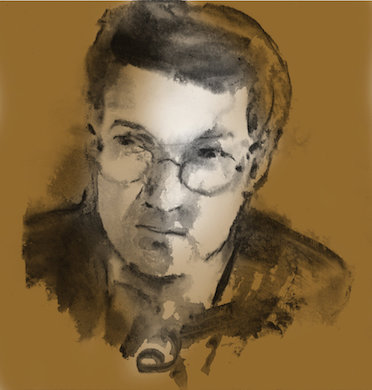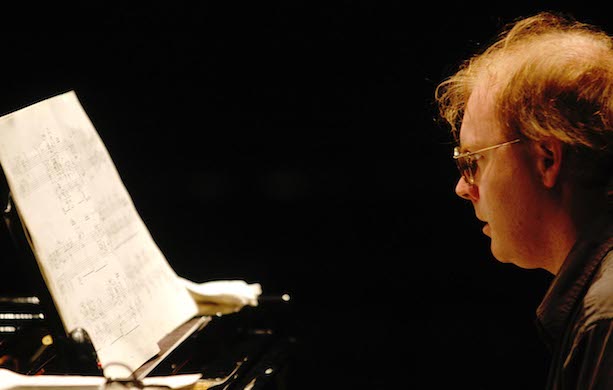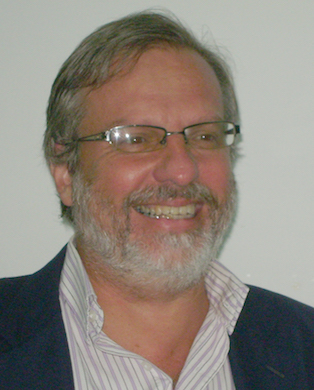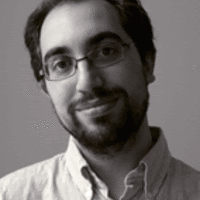Jean-Marc Chouvel – University Paris-Sorbonne, France – IReMus

bio: Jean-Marc Chouvel is professor at the University Paris-Sorbonne and researcher at the “Institute for Musicological Research” IReMus (UMR 8223). He is a member of the administration board of the French Society for Music Analysis (SFAM) and has published numerous articles and books on the topic of music analysis and, more particularly, on its relationship with the cognitive sciences. He is the author of several essays including: Esquisse pour une pensée musicale (Outlines for a musical thinking); Analyse musicale, sémiologie et cognition des formes temporelles (Music Analysis, Semiology and Cognition of Temporal Musical Forms) both published by l’Harmattan as well as collective works: “L’espace: musique / philosophie (Space: Music-Philosophy) with Makis Solomos ; Observation, analyse, modèle :peut-on parler d’art avec les outils de la science ? (Observation, analysis model: can we talk about music with the tools of science) with Fabien Levy ; Esthétique et Cognition (Aesthetics and Cognition) with Xavier Hascher, Gilles Deleuze : La pensée musique (Gilles Deleuze: the Music Thought) with Pascale Criton. He participated to the foundation of the journal Filigrane and to that of the online journal Musimediane.
After studies in engineering and a masters degree in nuclear physics, Prof. Chouvel completed his PhD at the university of Paris 8 under the direction of Daniel Charles on the notion of form in contemporary music. All the while, he studies music composition with figures such as Iannis Xenakis, Alain Bancquart, Emmanuel Nunes and, in Spain, Francisco Guerrero. He graduated with the prestigious « agrégation » in Plastic Arts and has taught instrumental and electroacoustic creation at the University of Lille 3 where he founded the Studio de Musique Électroacoustique du Nord (Electroacoustic Music Studio of the North) together with Ricardo Mandolini. He later taught at the University of Reims where, together with Daniel D’Adamo and in partnership with the local conservatory, he founded the first master’s degree in music composition. He participated to the foundation of the contemporary music ensemble l’instant donné of which he is the current president and directs two collectives at the Editions Delatour « quatuor » on the relationships between poetry and music and, in collaboration with Jean Michel Bardez, « transversal » about visual arts by musicians and, more generally, about « polymorphous » creators.
Musical Analysis and Representation
Within the course of its history, musical analysis developed a great number of representations with little interest on the principles and aims of representing. Representation in music is facing a double difficulty: the temporal nature of this art, and the fact that acoustic phenomena are nearly impossible to see. Nevertheless, most of the representations used by musical analysis, and first of all musical notation itself, deal with visual space. Despite of that, the representations of music used for analysis purposed are far from being of the same nature. They can be symbolic, graphic or even, more recently, animated figures on multimedia support. How does the transfer from the sonic domain to its representation operate? This is a great question. But it underlies another one, dealing with the problematic nature of representation. Music is a phenomenon implying the presence of several subjects through what is usually considered as an object, even if this word is specially unclear concerning music. This means that musical representation can not avoid to have a mental aspect, dealing with psychological and socio-cultural maters. How can musical analysis account for that aspect? Furthermore, any representation of a phenomena induces probably a modification in our way of perceiving it. Representation is then as much a testimony on reality than a way to filter or even to deform it.
Even if it seems difficult to avoid a typology of the traditional representations used in the field of musical analysis, a special emphasis will be placed on the recent evolution (or introduction) of some new ways of representing music. Topologic problems aroused from generalisation of Euler’s nets will be particularly emphasised, as they are prototypic of what we will call representational spaces. Harmonic organisation suggest a multiplicity of distances, and then a competition within different kind of representations witch can take into account different aspects of musical organisation. In this idea, there is not one best representation, but a representation more appropriate to show certain properties. The variety of possible Tonnetz, and their ability to show important aspects of harmonic and melodic systems will be demonstrated.
But representation of music cannot consist only in a map of relations between predefined concepts called “notes”. One of the main topic about music representation is the way it is able to deal with the dynamics aspects of the phenomenon, that is to say with its temporal behaviour. One of the more evident way to comply this goal is to represent a trajectory in the representational spaces already mentioned. This idea can lead to a generalisation of the concept of “phases spaces” initiated by Poincaré. The equivalence of phase space representation and structural grammar is a very important result, as it means there is a continuity in between physical and symbolic representation. It is also important to understand how this overall conception of representation can be realized from the acoustic signal itself. The concept of DFT (Differential Fourier Transform) is then very important as well as a conception of representations as projections of an overall scheme implying representational space, time and variation space.
Ian Pace – City University London, UK

bio: Ian Pace was born in Hartlepool, England in 1968, and studied at Chetham’s School of Music, The Queen’s College, Oxford, as a Fulbright Scholar, at the Juilliard School in New York, and did his PhD at Cardiff University. His main piano teacher, and a major influence on his work, was the Hungarian pianist György Sándor, a student of Bartók.
Based in London since 1993, he has pursued an active international pianistic career. His vast repertoire of all periods focuses particularly upon music of the twentieth and twenty-first centuries, including the farthest reaches of musical modernism and transcendental virtuosity. He has twice – in 1996 and again in 2016/17 – performed the complete piano music of Michael Finnissy across a series of concerts, and has also been closely associated with a range of other composers, including Pascal Dusapin (whose piano concerto À Quia he premiered and recorded with the Orchestre de Paris and Christoph Eschenbach), Brian Ferneyhough, Christopher Fox, James Dillon, Volker Heyn, Hilda Paredes, Horatiu Radulescu, Frederic Rzewski, and Walter Zimmermann, as well as championing many younger or lesser-known figures. In all he has premiered over 300 works for solo piano, as well as performing the classics of modern music: works by Boulez, Stockhausen, Barraqué, Xenakis, Ligeti, Nono, Kagel and Cage. He has also worked with and co-directed several ensembles and currently runs the City Pierrot Ensemble. Amongst the orchestras with whom he has appeared as soloist are the Orchestre de Paris under Christoph Eschenbach, the SWF Orchester Stuttgart under Rupert Huber, and the Dortmund Philharmonic under Bernhard Kontarsky.
He is also a historical musicologist and artistic researcher of wide-ranging interests and expertise, including multiple aspects of performance studies – historical performance practice, performance and analysis, autoethnography, artistic research, and the performance of modernist work – as well as the historiography of 20th and 21st century music, modernist aesthetics, and especially music in Germany from the Weimar to contemporary eras. He has also written and presented widely on critical issues relating to musicology and music education, as well as numerous articles on contemporary composers and other musical subjects. Ian is Senior Lecturer and Head of Performance at City, University of London, and has previously taught at the University of Southampton and Dartington College of Arts.
In Defence of AIP (Analytically-Informed Performance): The Performance-Analysis Dialectic Revisited
Over a period of time, a group of internationally influential British musicologist, most prominent amongst them Nicholas Cook, have published a range of articles investigating the relationship between analysis in performance, provoked initially by antipathy towards other work on this subject from Wallace Berry and Eugene Narmour. Cook’s analysis-related writings range from relatively uncontentious espousals of a variety of analytical techniques, through other writings broadening the scope of analysis to better encompass hybrid art forms such as music with video and film, then through intricate attempts to explore a two-way interaction between analysis and performance, whereby the analyst has the potential to learn as much from the performer as vice versa, towards more recent writings in which he coins the term ‘Analytically-Informed Performance’ (AIP) as a counterpart to Historically-Informed Performance (HIP), and argues against the value of such a practice.
In this paper, I mount a defence of AIP, starting from the position that a great many of the decisions any performer must make inevitably constitute some type of analytical perspective. Framing the concept of analysis broadly, incorporating the analysis of other performances, I survey the potential relationship between a range of different advanced analytical strategies and the type of work and associated questions generally undertaken by performers, whilst continuing to support the position taken by mid-period Cook and others, whereby analytical approaches can be modified or nuanced fruitfully by incorporation of perspectives derived from performance. I incorporate this discussion into a wider model of practice-as-research, presenting analytically-informed techniques as a sub-species of performative approaches and attitudes, which can also involve historical, documentary, stylistic and other approaches, or ideally some combination thereof. In particular, I argue that the analytical dimension, and all it can real about the specifics of any individual compositions, provide a way beyond the anonymising of works in terms of all-purpose period style as critiqued by 1950 by Adorno, writing about the Bach performances of his time.
I demonstrate these arguments through a range of examples, from Debussy, Dukas, Ives, Stockhausen, Finnissy and others, including some of the works presented in the recital I will be giving in this festival. I also add an autoethnographic dimension by surveying how various manifestations of the approaches described have informed my own work as a performer and concurrent musicologist over a quarter-century.
Damián Rodriguez Kees – Universidad Nacional del Litoral, Argentina

bio: Musician (composer), teacher, researcher, cultural manager. Professor of Music specialized in Harmony and Counterpoint, graduated from the Instituto Superior de Música (ISM) at the Universidad Nacional del Litoral (UNL) and Master in Latin American Art, in the area of music, at the Universidad Nacional de Cuyo (UNCuyo). He studied composition with Coriún Aharonián in Montevideo, Uruguay.
Since 2004 he is the main professor of the discipline Taller de Integración Estética (Workshop of Aesthetic Integration) at the ISM, institution where he teaches since 1986 and works as a researcher. He has, since then, obtained scholarships and published works in specialized media of the country and abroad. He was Director of Culture of the UNL in the period 2000-2007 and Secretary of Culture of the City of Santa Fe in the period 2007-2014. Since 2014 he is Director of the ISM.
His academic works and compositions have been presented at congresses and concerts at universities and halls, in several countries of America and Europe. Almost all of his works have been premiered. This includes pieces for more than forty shows of dance, theater and video, the creation and direction of shows that combine the languages of theater and music, works for orchestra, choir, chamber groups, pieces for solo instruments, mixed, with support in video, and musical theater. Several of these works are part of phonograms of contemporary Argentinian chamber, choral and orchestral music.
Cuerpo y Sonido. Una revisita al gesto escénico en músicas recientes
Si bien no es frecuente la incorporación de la mirada sobre los aspectos gestuales que llevan a la producción del sonido o el silencio en escena en músicas del siglo XX y XXI, existe ya un corpus teórico que posibilita el análisis y nuevas reflexiones sobre la participación fundamental del gesto en la configuración del hecho musical. En este trabajo intentaremos ampliar dicha mirada y desarrollar un aporte al mencionado corpus.
En principio debemos realizar una distinción entre dos términos usados frecuentemente de manera indistinta: movimientoy gesto. La diferencia entre ambos es que el gestotiene una función y una intención expresiva. Es decir, que cuando un intérprete realiza un movimiento para producir un sonido con su instrumento o su voz, está realizando un gesto, un movimiento con función expresiva. Por lo tanto, cuando hablamos de la gestualidad de la música nos referimos la huella corporal que se percibe fenomenológicamente de la obra.
El llamado Teatro Instrumental o Teatro Musical Contemporáneo viene a poner en superficie, en la segunda mitad del siglo XX, el debate sobre la percepción musical, entendiendo el espacio escénico de la práctica del concierto y al cuerpo del intérprete que ocupa ese espacio, sus movimientos, sus gestos, como materia prima compositiva en igualdad de condición jerárquica con el sonido, en franca contraposición con el extremo control del sonido en todos sus parámetros que proponían las estéticas de los cincuentas de la mano del llamado serialismo integral. Así, la obra ya no se reduce a la percepción auditiva sino que se abre a todos los sentidos, especialmente el visual. Compositores de estas y otras latitudes, han dado cuenta de esta posibilidad expresiva interpelando nuestra percepción; el esfuerzo por separar el sistema auditivo del resto de los sentidos se diluye al incorporar el estímulo visual. La música no sólo se escucha sino que se ve. La incorporación del silenciocomo elemento expresivo, y los recursos de la repetición y la reiteración que generan acontecimientos múltiples,aportan a la “teatralidad” de la música poniendo en evidencia que el sonido no es el único material de composición. Así las obras exploran lo extremoal decir del teórico de cine argentino David Oubiñas, y se sitúan en lo que el teórico literario español Juan Luis Pintos describe como zona fronteriza, de la mano de la teoría de la dialéctica de la fronteradel musicólogo, también español, Ramón Barce. En este sentido, sin duda son convergentes los aportes de estos y otros teóricos de diferentes disciplinas quienes generan, al decir de Walter Benjamin, una constelación de conocimientos en las que también se cruza la fenomenologíade Merleau Ponti.
De este marco teórico general, que hace de lo nimio, del detalle, lo central, llegamos a las teorías de la “cognición encarnada” (embodied cognition) que postula el sueco Bjorn Heile en el análisis de obras de teatro musical, especialmente de aquellas de Mauricio Kagel, y a nuestra recuperación de la kinestecia, como rama de la neurociencia. Ambas nos hablan de la percepción conjunta del sonido y el gesto que lo produce como resultado del impulso y respuesta sensorial tanto del emisor como del receptor.
Así, mediante el análisis de obras de Tierry de Mey, Theo Lovendie, Tim Rescala y obras propias, desarrollamos un aporte teórico no solo para analizar la música en escena no sólo desde lo sonoro sino en la percepción de su totalidad en la que el cuerpo del intérprete no “arruina” la música sino que la humaniza.
Denise Hortência Lopes Garcia – Universidade de Campinas

bio: Compositora paulista, professora do Instituto de Artes da Unicamp desde 1985. Bacharel em Música pela USP, Mestre em Artes pela Unicamp e Doutora em Comunicação e Semiótica pela PUC-SP. Realizou estudos de especialização em composição na Musikakademie Detmold e na Musikhochshule de Munique. Fez estágio de doutorado junto ao INA-GRM em Paris. Realizou pós-doutorado junto à Escola de Música da UFRJ. É bolsista de produtividade em Pesquisa 2 do CNPq desde 2010. Sua pesquisa musicológica se concentra na área de análise de música eletroacústica, tendo se dedicado nos últimos anos a pesquisar, documentar e analisar a música eletroacústica brasileira.
Como compositora trabalhou em pesquisas interdisciplinares junto ao LUME/UNICAMP, tendo composto música para importantes produções teatrais desse Núcleo, assim como junto a projetos do Departamento de Dança da Unicamp. Nos anos 90 desenvolveu trabalhos na área da música eletroacústica, gênero musical que responde pela maior parte de sua publicação em Cds. Tem dois Cds solos publicados e várias publicações de obras em coletâneas. Nos últimos anos tem composto também obras para Orquestras Sinfônicas.
Foi Coordenadora do Programa de Pós-graduação em Música e Coordenadora dos Cursos de Pós-graduação do Instituto de Artes da Unicamp. Durante 2010 foi Diretora Associada do CIDDIC na gestão de Fernando Hashimoto, tendo assumido a Direção do CIDDIC no segundo semestre do mesmo ano.
Clément Canonne – IRCAM-CNRS, França

bio: Clément Canonne is a CNRS researcher in the « Analysis of Musical Practices » team at IRCAM since 2015. His researches are mainly focused on collective free improvisation, bringing perspectives from ethnography and experimental psychology. Recent publications on this topic include papers in Cognition, Music Theory Online, Empirical Musicology Review, Revue de Musicologie, Psychology of Music and Journal of New Music Research.
He is also interested in the philosophy of music – in collaboration Pierre Saint-Germier, he has translated in French two volumes of essays from the American philosopher Jerrold Levinson (Vrin, 2015 & 2019)– and in the empirical approaches of aesthetic issues.
He is currently working on two large scale projects: the ANR-funded project « Musical Improvisation and Collective Action » (2018-2021), which aims to study joint action and emergent coordination through the lens of free improvisation; and an ethnographic inquiry into the material aspects of improvisers’ instrumental practices across many different genres (baroque, jazz, sound art, free improvisation and traditional music).
A Continuum of Improvisational Practices? Some More Thoughts on Improvisation
In 1974, ethnomusicologist Bruno Nettl published a very influential paper, “Thoughts on Improvisation: A Comparative Approach”, in which he defended the idea that improvisation and composition are best seen as opposite ends on a continuum rather than as a rigid dichotomy. In other words, according to Nettl (and many others since), improvisational practices likely lie along a continuum: pure improvisation or pure composition does not exist, there is rather a continuum of musical practices that combine spontaneity and predetermination to various degrees. But such a conception also presents the risk of weakening the strong specificities (both cognitive and phenomenological) exhibited by different improvisational practices. In this talk, I will present several case studies drawn from free improvisation, jazz, and western contemporary music, to show how we could refine this idea of a continuum of improvisational practices.
